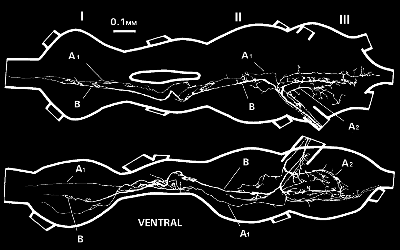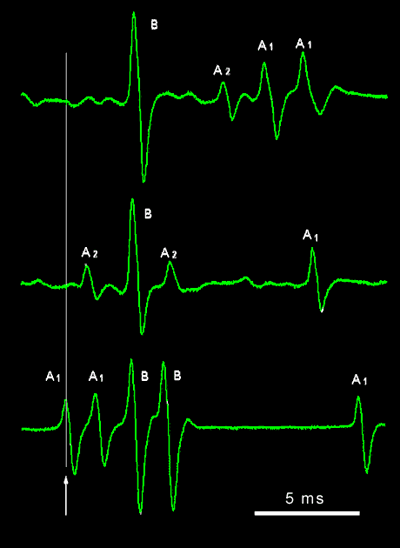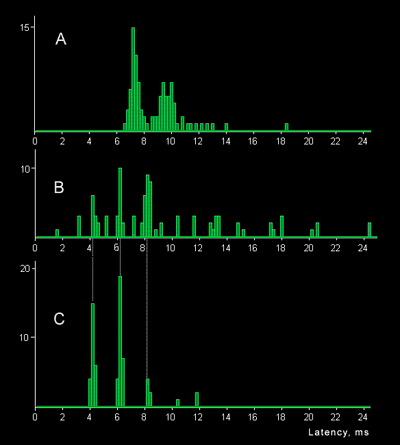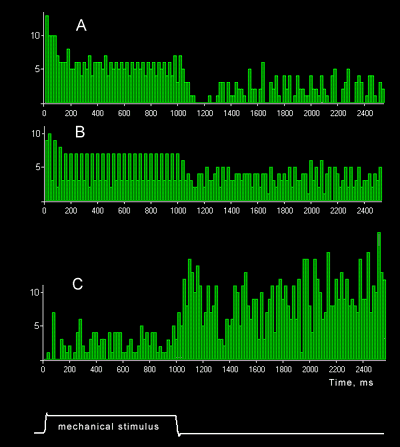The B cell
In addition to the two acoustic receptor cells, A1 and A2, tympanic organ of noctuid moth includes a third neuron usually referred to as the B neuron or the B cell. It is a large neuron which enters the CNS via the tympanic nerve along with A1 and A2 axons. Within central ganglia its projections are very similar to those of the A1 neuron (Treat, Roeder, 1959; Surlykkå, Miller, 1982)
This cell is known to be the source of continuous and apparently spontaneous impulses in the tympanic nerve.



